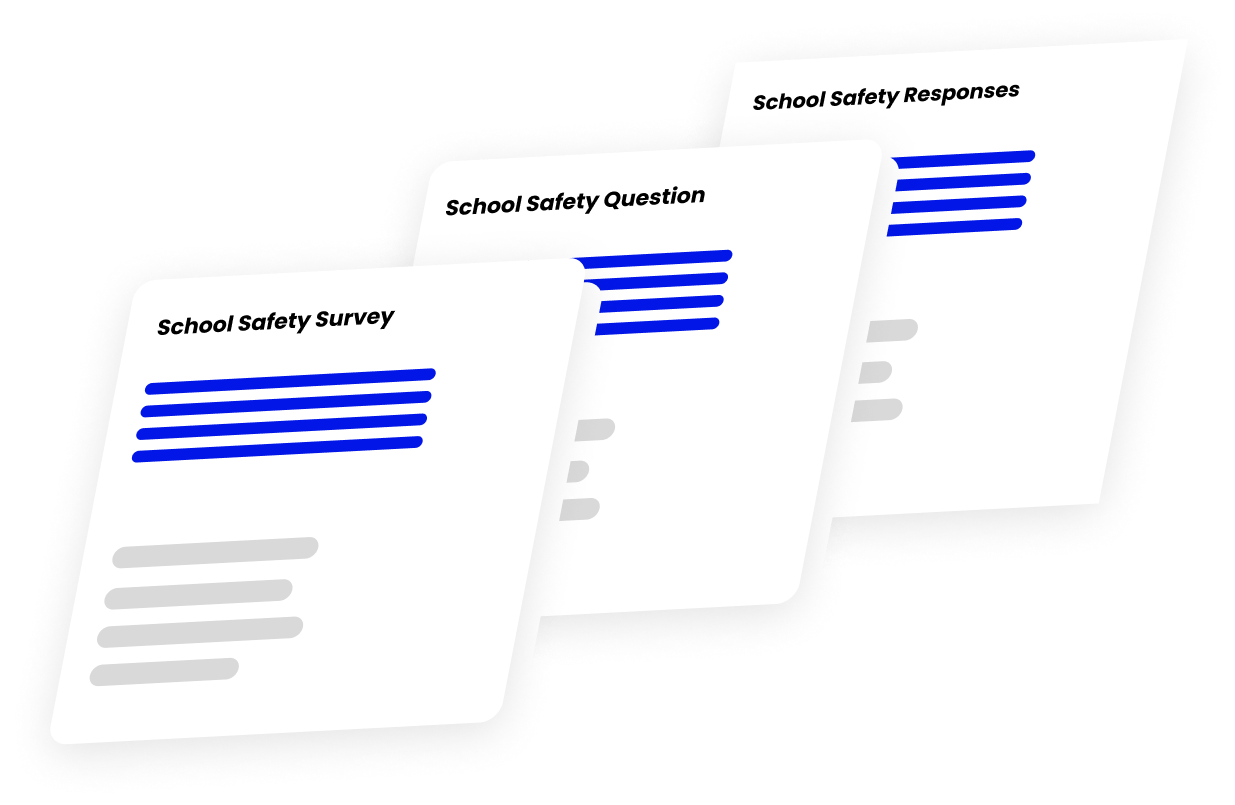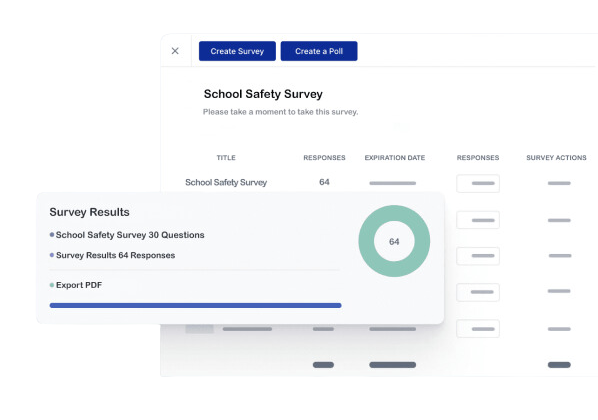School Safety Survey
Conducting a school safety survey throughout the school year is an important step for law enforcement and school officials to identify safety concerns and develop strategies to address them. Students and staff are typically asked to rate their level of safety while at school, providing valuable feedback for school safety initiatives.
What Is School Safety Survey?
The purpose of the School Safety Survey is to evaluate a school’s overall safety by examining various factors, including the physical security of the building, the effectiveness of the school’s emergency procedures, and the level of communication between the school and local law enforcement. In addition, the survey gathers feedback from students on their experiences with the School Resource Officer (SRO), their willingness to report crimes, and their overall perception of safety at the school. By collecting this data, the survey aims to provide insight into the safety of the school environment and identify areas for improvement.
Why Should It Be Done?
Police departments should conduct school safety surveys to identify potential safety hazards and areas of improvement. Surveying students, teachers, and administrators can help police departments allocate resources more effectively and ensure that school safety remains a priority.

Why police organizations should conduct school safety surveys:
- To ensure that schools are safe environments for students and staff.
- To identify potential safety hazards and address them before they become serious problems.
- To develop and implement safety plans that are tailored to the specific needs of each school.
- To train school personnel in how to respond to emergencies.
- Coordinate with other agencies that have a role in school safety, such as the fire departments and EMS services.
- To keep parents and the community informed about the steps being taken to ensure school safety.
- To assess the effectiveness of safety measures that are already in place.
- To identify areas where additional safety measures are needed.
- To make sure that schools are aware of an active shooter plan.
- To reduce the risk of liability in the event of a safety incident.
- To help create a climate of trust and cooperation between police and the school community.
- To promote positive relationships between police and students.
- To provide an opportunity for police to collect intelligence about potential threats to school safety.
- To provide data that can be used to assess the need for additional police resources in specific schools or areas.
- To help ensure that schools are safe places for everyone.
Benefits Of School Safety Survey
1. Improved Communication: A school safety survey can help law enforcement better understand the needs of the school community and how to best serve them. This can help foster better communication between law enforcement and the school community, which can lead to improved relationships and trust.
2. Increased Awareness: A school safety survey can help law enforcement become more aware of the safety concerns of the school community. This can help them better understand the issues and develop strategies to address them.
3. Improved Planning: A school safety survey can help law enforcement better plan for potential safety issues. This can help them develop better strategies to prevent and respond to safety issues.
4. Improved Response: A school safety survey can help law enforcement better understand the needs of the school community and how to best respond to safety issues. This can help them develop better strategies to respond to safety issues quickly and effectively.
Improved Accountability: A school safety survey can help law enforcement better understand the needs of the school community and how to best hold themselves accountable for their actions. This can help them ensure that they are taking the necessary steps to ensure the safety of the school community.

Some of the benefits of conducting School Safety Surveys include:
- Identifying potential safety concerns at a school.
- Developing strategies to protect students and staff from potential threats.
- Assessing the level of safety at a school.
- Identifying areas where improvements are needed.
- Establishing communication between the police department and the school.
- Building trust between the police department and the community.
- Increasing transparency between the police department and the community.
- Improving the image of the police department.
- Creating a safer school environment.
- Utilizing School Resource Officers properly.
- Creating a safer school environment.
- Reducing the fear of crime among students and staff.
- Encouraging students and staff to report crime and suspicious activity.
- Building relationships between SROs and students.
- Fostering a positive relationship between the police department and the school.
- Building community support for the police department.
- Enhancing the safety of the community.


